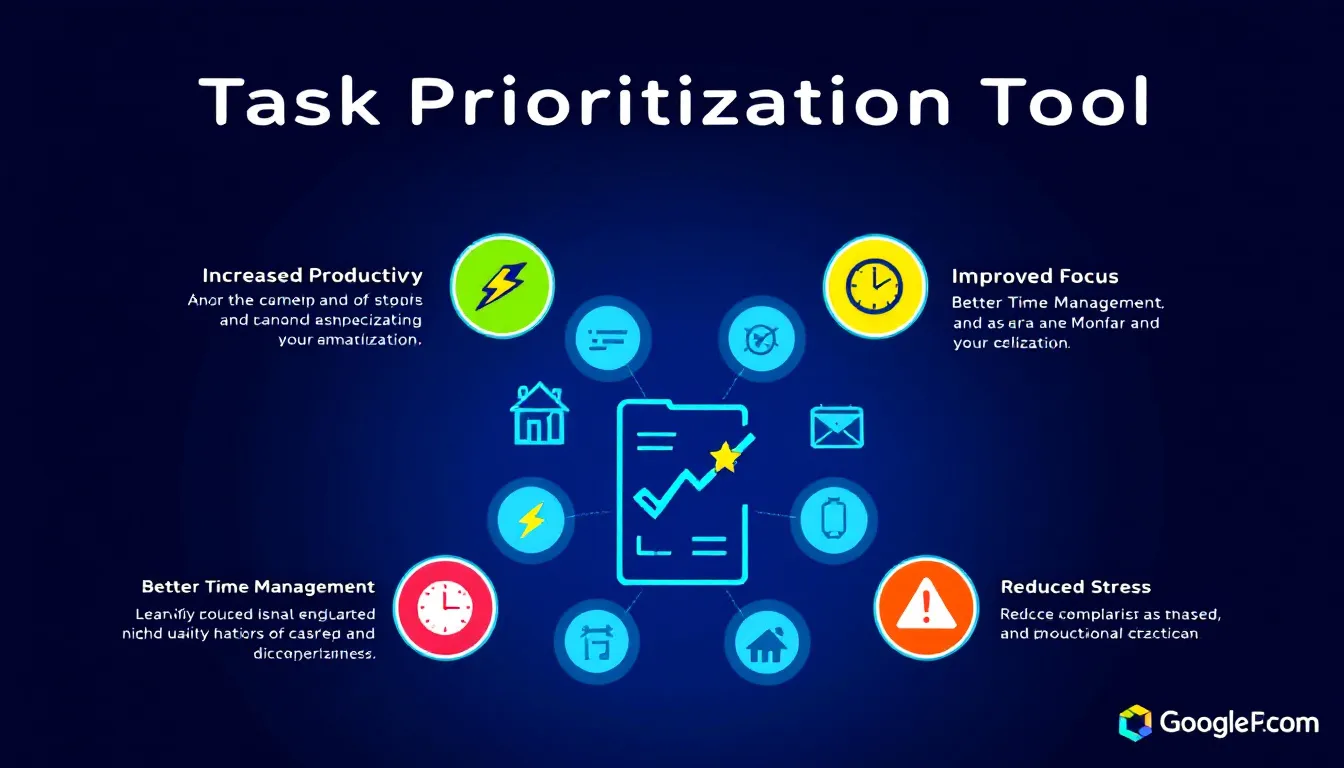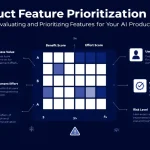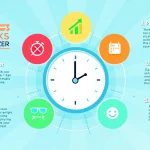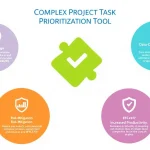Task Prioritization Assistant
Is this tool helpful?
How to Use the Task Prioritization Tool Effectively
This Task Prioritization Tool helps you organize and rank your daily tasks to maximize productivity. Follow these steps to get the best results:
1. Enter Your List of Tasks
In the “List of tasks to be prioritized” field, write each task on a new line. Use clear and specific descriptions to help the tool evaluate effectively.
Example inputs:
- Prepare marketing campaign outline
- Respond to supplier emails
- Plan team training session
- Review quarterly budget
2. Add Any Specific Deadlines (Optional)
Include any due dates related to your tasks. Deadlines allow the tool to factor urgency into prioritization.
Example inputs:
- Marketing campaign due next Wednesday
- Supplier responses needed by Monday
3. Specify Importance Criteria (Optional)
Indicate which factors you consider when judging task importance. This helps the tool weigh tasks according to your priorities.
Example criteria you could use:
- Customer satisfaction
- Revenue impact
- Regulatory deadlines
4. Identify Task Dependencies (Optional)
List any tasks that rely on others for completion. Understanding dependencies helps the tool arrange tasks logically.
Example inputs:
- Team training must occur before new project launch
- Budget review needed before approval meeting
5. Submit Your Information
Click the “Prioritize Tasks” button to analyze your inputs. The tool will generate a clear, ranked list that balances deadlines, criteria, and dependencies.
6. Copy and Use Your Prioritized List
Use the “Copy to Clipboard” feature to transfer your prioritized tasks into your preferred planner or task management app for daily use.
Task Prioritization Tool: Definition, Purpose, and Benefits
Task prioritization helps you order work based on importance, urgency, and effects. This process guides you to focus on key tasks first, ensuring you use your time and energy wisely.
Why Prioritize Your Tasks?
- Boost Productivity: Focus on top priorities and get more done in less time.
- Manage Time Effectively: Align your schedule with deadlines and important goals.
- Reduce Stress: A clear plan prevents feeling overwhelmed by competing demands.
- Support Better Decisions: Know what deserves your attention first.
- Increase Focus: Spend your energy on tasks that truly matter.
How the Tool Helps
This Task Prioritization Tool analyzes your task list alongside deadlines, importance criteria, and dependencies. It creates a practical order so you can tackle work systematically and efficiently.
Practical Uses of the Task Prioritization Tool
1. Project Planning
Project managers can list all critical activities, mark deadlines, and set dependencies. The tool recommends the best task sequence, helping to avoid delays and keep the project on track.
- Draft project timeline
- Set team responsibilities
- Identify key milestone deadlines
- Coordinate interdependent activities
2. Executive Scheduling
Executives often juggle strategic tasks with urgent demands. This tool ranks these responsibilities so the highest-impact items receive priority, improving decision-making during busy periods.
- Review quarterly reports
- Prepare investor presentations
- Approve budgets and initiatives
- Meet with strategic partners
3. Academic and Personal Task Management
Students and individuals can use this tool to prioritize study sessions, assignments, and personal goals. Balancing deadlines, importance, and dependencies leads to better time management and goal achievement.
- Plan study schedule
- Manage assignment deadlines
- Balance extracurricular activities
- Organize personal development tasks
Maximizing Productivity Through Effective Task Prioritization
Adopt These Best Practices:
- Regularly Review Your Priorities. Adjust your task list daily or weekly to capture shifting demands or goals.
- Use Time Blocking. Schedule blocks for high-priority tasks to reduce distractions and work deeply.
- Apply the Two-Minute Rule. Immediately complete tasks that take less than two minutes to avoid backlog.
- Delegate When Possible. Assign lower-priority tasks to others, freeing your time for more important work.
- Include Buffer Time. Allow breaks between tasks to handle interruptions or overruns.
- Align Tasks with Your Energy Peaks. Tackle demanding tasks when you feel most alert and focused.
- Reflect and Learn. Monitor your completion patterns to improve your prioritization over time.
Understanding Core Prioritization Concepts
The Eisenhower Matrix
Organize tasks by urgency and importance:
- Urgent and Important: Do immediately
- Important but Not Urgent: Schedule strategically
- Urgent but Not Important: Delegate or minimize
- Neither Urgent nor Important: Eliminate
The Pareto Principle (80/20 Rule)
This principle highlights that 80% of outcomes come from 20% of efforts. Focus on that vital 20% for maximum impact.
The ABCDE Method
Label tasks as A through E based on importance:
- A: Must-do tasks with serious consequences if ignored
- B: Important but less critical than A
- C: Nice to do, no consequences
- D: Delegate
- E: Eliminate
Why You Should Use This Task Prioritization Tool
- Optimize Your Time: The tool helps you identify high-impact tasks so you work smarter, not harder.
- Manage Deadlines Efficiently: Integrating due dates makes sure nothing important slips through.
- Stay Strategically Aligned: Tailor priorities to your goals using customizable importance criteria.
- Balance Complex Workloads: Recognizing task dependencies prevents bottlenecks in your workflow.
- Reduce Stress: A clear, prioritized list keeps your mind organized and in control.
- Make Better Decisions Quickly: With a ranked task list, you can respond effectively to new demands.
- Track Your Productivity: Review prioritized outcomes over time to boost efficiency continuously.
Important Disclaimer
The calculations, results, and content provided by our tools are not guaranteed to be accurate, complete, or reliable. Users are responsible for verifying and interpreting the results. Our content and tools may contain errors, biases, or inconsistencies. Do not enter personal data, sensitive information, or personally identifiable information in our web forms or tools. Such data entry violates our terms of service and may result in unauthorized disclosure to third parties. We reserve the right to save inputs and outputs from our tools for the purposes of error debugging, bias identification, and performance improvement. External companies providing AI models used in our tools may also save and process data in accordance with their own policies. By using our tools, you consent to this data collection and processing. We reserve the right to limit the usage of our tools based on current usability factors.







